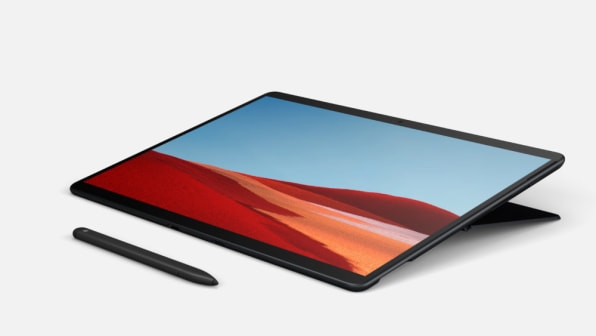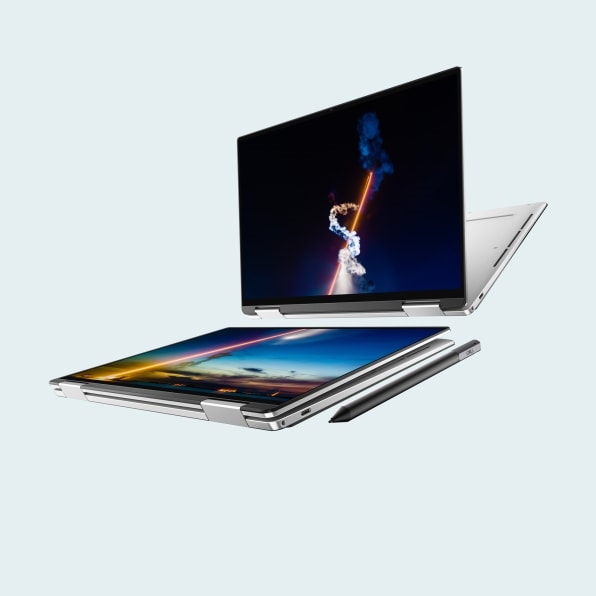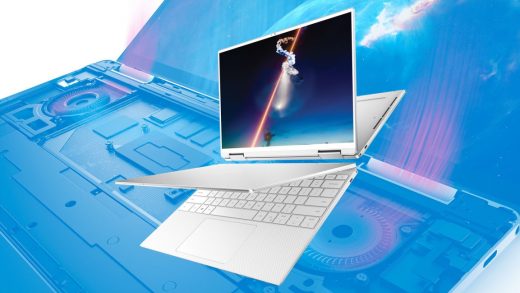Meant as iPad killers, ‘2-in-1’ PCs have retreated to their laptop roots
Ten years ago, when Apple introduced the iPad, it initially downplayed the versatility of its new gadget. Instead of positioning it as a rival to the PC, Apple called it the ideal device for a subset of tasks for which a phone was too little and a laptop was too much. Soon, though, it became apparent that the iPad could be used for a lot more than that handful of specific tasks, and Apple anointed the tablet as its vision for the future of the PC.
Microsoft, whose Windows Mobile had been outplayed by the iPad’s smaller predecessor, the iPhone, took notice. It was one thing for Apple to have beaten Microsoft in what was then an emerging smartphone market, even though it had the potential to be far larger than the PC market. But the iPad represented a more existential threat to Microsoft’s bread and butter, its Windows business. The company countered by releasing Windows 8, a version of the operating system that was optimized for such input but which failed to attract many touch-optimized apps.
Thus began a battle for the future of the PC’s soul even more fundamental than the 1980s one spurred by the Macintosh’s graphical user interface. The dilemma pitted the two halves of the iconic notebook computer design against each other. Would the familiar physical keyboard be relegated to PC history alongside parallel ports and floppy drives? Or would the touchscreen become just another component, a mode into which laptops could transform when the task demanded it?
It’s never going to be the perfect tablet.”
Donnie Oliphant, Dell
Makers of Windows PCs pursued two paths to find out. One was “detachable” laptops, in which the keyboard could be completely removed, an approach I wrote about when I contrasted the evolution of the iPad Pro and the Surface Pro. Since then, Microsoft has released the Surface Pro X, a version of the device that comes closer than any before it to matching the iPad’s sleek design, thanks to its use of an ARM-based processor.

Microsoft’s Surface models remain the highest-profile detachables. Other PC companies have been far more active in pursuing “convertible” 2-in-1s. These carry forward a traditional laptop form factor and ergonomics but have a hinge that lets you rotate the keyboard behind the display, turning them into thick tablets.
While such devices existed before the iPad, their modern era kicked off with the introduction of Lenovo’s Yoga notebook in 2012. Donnie Oliphant, senior director of product marketing at Dell, gives Lenovo credit for creating the category, along with Intel and Best Buy for helping to drive it.
Dell’s first partnership with Intel on a “Project Athena” laptop optimized for modern road warriors was last year’s XPS 13 convertible 2-in-1. That device focuses on attributes such as a slim screen border and carefully managed thermal output, and it leverages Intel research into hinge design. Ultimately, though, it’s still a laptop first.
“What we’ve learned through the many years of doing the 2-in-1s is it’s never going to be the perfect tablet,” Oliphant says. Indeed, the company’s first attempt at a 2-in-1, 2013’s XPS 11, had a flat keyboard to minimize the thickness and make the device more tabletlike. In retrospect, Oliphant says, it was “very forgettable.”
Last month at CES, Dell introduced a new XPS 13 2-in-1 that dispenses with the previous version’s wraparound hinge. Citing research from Intel, Microsoft, and Dell itself on long-term usage of 2-in-1s, Oliphant says that the machines are used as notebooks between 70 and 95 percent of the time. According to Josh Newman, Intel’s VP of client computing, 2-in-1 functionality can’t be used as an excuse for a poor laptop design. Agreeing with Oliphant’s characterization of 2-in-1 functionality as “icing,” Newman adds, “It’s got to first and foremost be incredible in traditional laptop clamshell mode.”

The 10% tablet
Why continue to sell convertible 2-in-1s then? Newman cites other research that indicates buyers may not even have a clear usage case for other modes when they purchase the device, but they come to discover uses 6 to 12 months into ownership that increase satisfaction even if they are used only 10 percent of the time. Oliphant compares the feature to intermittent wipers on a car. While you may use them only for a fraction of the time you’re driving, you wouldn’t want to purchase a car without them.
A decade after the iPad’s debut, Apple’s tablet has neither come to define computing nor has it been “featurized” into irrelevance by touchscreen laptops that do some of the same things. You can think of the two Windows-based responses as existing along a spectrum between tablet and laptop. Detachables such as the Surface skew more toward the former; convertibles such as the XPS 13, more toward the latter.
But while neither approach has done much to marginalize the iPad, usage shows that convertibles have left the battlefield. Bound by the power of the classic clamshell laptop design’s gravitational force, they have continued on as laptops that can manage a few extra tricks in a pinch. That would explain why Microsoft has stepped away from positioning the Surface as the tablet that can replace a laptop. Instead, it has led the war on the iPad by pushing the envelope on thinness and lightness. And already, Microsoft is looking toward what it believes will be the next battle: one fought by devices such as the upcoming Surface Neo on two screens.
Fast Company , Read Full Story
(16)



